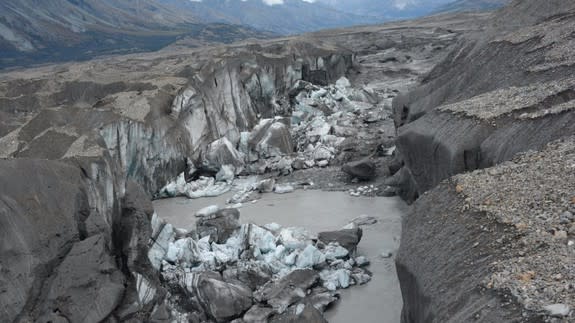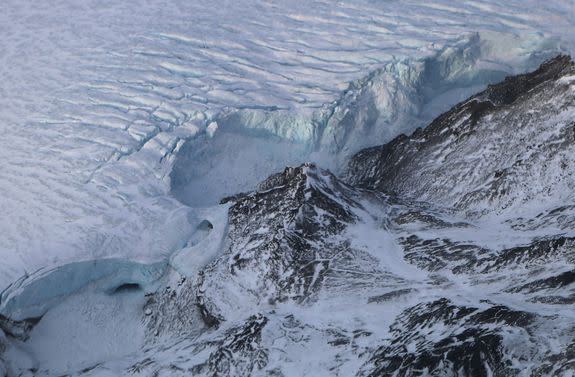'River piracy' is the latest weird thing to come out of climate change

A pirate is lurking in northern Canada, and global warming is only making it stronger.
The Alsek River recently stole water flowing into the Slims River and took it for itself, a phenomenon known as "river piracy" — which scientists blame on a massive retreating glacier distributing water in new ways.
The development is the first known case of river piracy in the modern era, and it's the first to be pinned in part on climate change, researchers wrote in a study published Monday in the journal Nature Geoscience.
It also points to an unexpected consequence of human-caused global warming.
SEE ALSO: NASA photos capture a strange new crack in a massive Greenland glacier and we might be doomed
"So far, a lot of the scientific work surrounding glaciers and climate change has been focused on sea-level rise," Dan Shugar, the study's lead author and a geoscientist at the University of Washington, Tacoma, said in a news release. "Our study shows there may be other under-appreciated, unanticipated effects of glacial retreat."

Image: Dan Shugar/University of Washington Tacoma
The river piracy began last year at the edge of the massive Kaskawulsh Glacier, which spans some 15,000 square miles across Canada's Yukon territory. For hundreds of years, the glacier poured meltwater into river basins of the Slims, which ends in the Bering Sea, and the Kaskawulsh, which empties into the Gulf of Alaska.
Researchers found that a new, 100-foot canyon in the glacier's toe had abruptly rerouted meltwater away from a glacial lake that feeds the Slims River and instead delivered that water to the Kaskawulsh River, which feeds the Alsek River.
As a result, the Alsek River — a popular whitewater rafting destination — ran higher than normal last summer, bloated with stolen water.
The Slims River, meanwhile, was rapidly reduced to a trickle. Kluane Lake, which is fed by the river, was so low that residents struggled to launch their boats. Dust swirled in the parched valley, making it hard to fly on certain days, Yukon News reported last June.

Image: European space agency
Shugar and his co-authors, including Jim Best at the University of Illinois and John Clague at Canada's Simon Fraser University, had originally planned to study the Slims River in August 2016.
Instead, they found "a long, skinny lake," Shugar said. Gauges showed that the river, once 10 feet deep, had dropped suddenly from May 26 to 29, not long after the canyon was formed in the glacier.
"Day by day we could see the water level dropping," he said.
Scientists said there are two main reasons why the Kaskawulsh Glacier has retreated by about mile over the last century. After expanding during a cold period centuries ago, known as the Little Ice Age, the glacier is naturally readjusting its size in these warmer times.
But it's also melting in part because of greenhouse gases. The team found only a tiny probability — 0.5 percent — that the glacier's retreat could have happened in a "constant climate," meaning there's a 99.5 percent probability that the glacier is responding to modern climate change.

Image: Mario Tama/Getty Images
"I always point out to climate-change skeptics that Earth's glaciers are becoming markedly smaller, and that can only happen in a warming climate," Clague, one of the co-authors, said in the news release.
Canadian scientists who observed this river piracy last year were more ambivalent about the role of human-driven global warming in the glacier's retreat.
"Would this particular event have happened without anthropogenic climate change? Probably," Kristen Kennedy, a geologist with the Yukon Geological Survey, told the Yukon News last summer.
"It's neat to see. It's really just an interesting natural phenomenon that's happening right before our eyes, and not very many people get to see something like this," she said.
But outside scientists praised Monday's study and said it was significant.
Richard Alley, a glacier expert at Pennsylvania State University who wasn't part of the study, told the Associated Press that the findings reconfirm "that climate change has large, widespread and sometimes surprising impacts."
